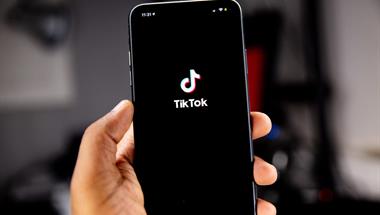Marketing... it's critical for your business, but sometimes it can be full of complicated language and strategies that are hard to understand.
It’s easy to feel overwhelmed by Internet marketing when you don’t speak the lingo, so here’s a list of 15 digital marketing acronyms you need to know.
1. SEO - Search Engine Optimization
SEO refers to a set of practices used to increase your website’s organic (unpaid) ranking in search engine results pages (SERPs). Common SEO practices include the production of relevant (and helpful) content (blogs, articles, videos, etc.) on your website, keyword optimization, use of internal links, acquisition of backlinks from reputable sources, improvement of site speed, and building brand trust. It is a key piece to any content marketing strategy and can help be a long-term pillar in your marketing strategy.
Search engine optimization is also an opportunity for your content to get what’s called a featured snippet opportunity. A featured snippet is the short copy block that appears at the top of search engine results. When your content is pulled for one, the page where the context comes from is featured underneath the answer. You can utilize these opportunities by answering questions searchers may ask.
2. SERP - Search Engine Results Page
This is the page of a search engine like Google or Bing that features the results of a search query. For example, if an online user searches “What is brand awareness?,” the SERP shows the results that algorithms have found to be the most user-friendly and helpful in answering this question. The SERP features both paid and organic (unpaid) results. SEO can be used to improve a website’s organic rankings on SERPs. Having a Google My Business page is a key way to rank higher on SERPs.
3. PPC - Pay-per-click
This is a form of paid digital advertising in which the advertiser pays a fee every time someone clicks on their ad. One of the most common forms of PPC is search engine advertising (i.e. the paid ads you see at the top and bottom of the search engine results page). Search engine PPC helps advertisers boost their visibility in relevant online searches and drives high-quality traffic to their websites.
4. SEM - Search Engine Marketing
SEM refers to Internet marketing practices that improve a website’s visibility in search engines, thereby generating a higher volume (and higher quality) of web traffic. While SEM traditionally referred to a variety of search engine-related marketing practices, it’s now more commonly used to describe paid advertising (PPC). You can do PPC on Google or Bing/Yahoo.
5. CPC - Cost-per-click
CPC refers to the cost an advertiser pays each time an online user clicks on their digital ad. This value is determined by dividing the cost of the marketing campaign by the total number of clicks. In PPC campaigns, advertisers can lower their CPC by using smart bidding strategies and improving the quality of their ads and landing pages.
6. CPL - Cost-per-lead
This is the cost of acquiring a new lead or an individual who has expressed interest in doing business with you. The individual may have demonstrated interest through a call, a form, a sign-up, etc. CPL is calculated by dividing the cost of the marketing campaign by the total number of leads.
7. CPA - Cost-per-acquisition
CPA is the cost of acquiring a new customer or sale. While CPA is similar to CPL, it tends to be a more telling metric because it represents new business achieved through a marketing effort, rather than just new inquiries (potential business). CPA is calculated by dividing the cost of the marketing campaign by the total number of acquisitions.
Digital marketing has a lot of aspects to it including understanding your site’s metrics.
8. CPM - Cost-per-thousand
This term refers to the cost for every 1,000 impressions (or views) of an ad. The CPM advertising model is typically used for marketing campaigns that are focused on building brand awareness, such as banner ad campaigns.
9. CTR - Click-through-rate
CTR can be calculated by dividing the total number of clicks by the total number of impressions. This measurement gives you a sense of whether your marketing strategy is generating enough interest to push users to take an action (click on a link, click on an ad, etc.).
10. KPI - Key Performance Indicator
This is a quantifiable measurement you use to assess the performance of a campaign over time. Your KPI should reflect your most important business objectives, such as sales revenue, cost per acquisition (CPA), or digital marketing return on investment (ROI). The best KPIs are “SMART”: Specific, Measurable, Achievable, Relevant, and Time-Based.
11. LTV - Lifetime value
Customer LTV refers to the monetary value of a customer over the course of their relationship with your business. For example, if the average customer relationship for your business is 10 years and customers spend an average of $500 a year with your company, your customer LTV should be $5,000. LTV is an important metric to consider when determining which marketing efforts will deliver the greatest return on investment (ROI).
12. ROI - Return on investment
ROI refers to the percentage or ratio of financial return generated from an investment compared to the cost of that investment. Here’s the formula for calculating ROI: (Investment Gain - Investment Cost) / Investment Cost. Tracking ROI is essential in marketing—it’s how you know if your money is being well spent.
13. CTA - Call to action
This is messaging that tells readers to take a specific action, such as “call us today,” or “request a free consultation.” It’s vital to include strong calls to action in your marketing content (your website, ads, emails, etc.), as they help move leads from “prospects” to “paying clients.”
14. CMS - Content management system
A content management system is a digital platform that allows you to add, remove, and edit content on your websites, such as your page copy, blog posts, and video content. A productive content marketing plan is the backbone of building a successful campaign.
15. SMS - Scorpion marketing system
SMS refers to Scorpion’s digital marketing platform—a platform that allows clients to view the health of their digital marketing campaigns in an easy-to-use, real-time dashboard. Clients can view metrics related to their website traffic, organic search engine rankings, paid advertising, and online reviews on places like Yelp, Thumbtack, Google, Facebook, and local online listings.
If you’re ready to take the mystery out of digital marketing, think about partnering with an award-winning digital marketing agency with a track record of delivering big-time growth for its clients.
And if you want to learn more about putting together a successful digital marketing plan or digital marketing acronyms, don’t hesitate to reach out to Scorpion directly.



